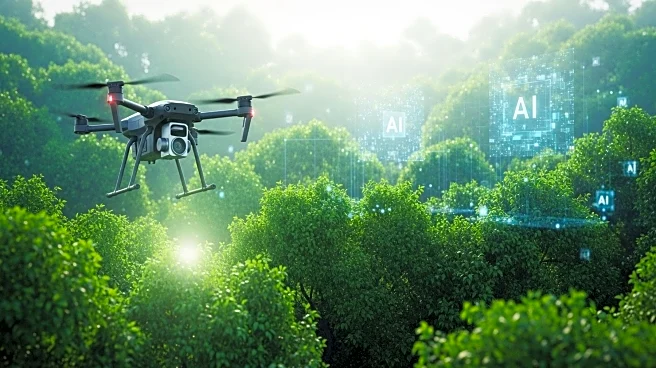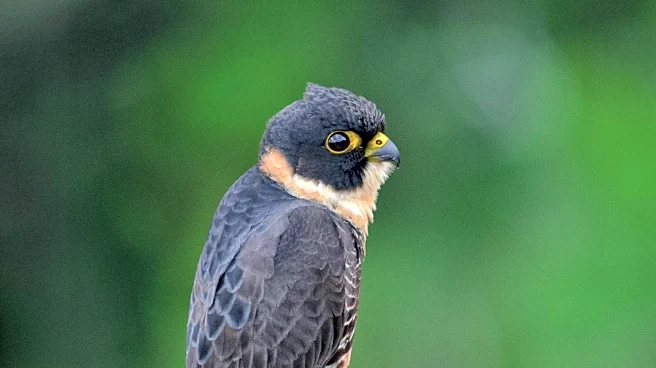What is the story about?
What's Happening?
Researchers from the Swiss Federal Institute for Forest, Snow and Landscape Research are pioneering a new approach to biodiversity monitoring using drones and advanced technology. In a recent field test, a drone equipped with a cotton swab collected DNA samples from various species in a Swiss meadow. These samples were then processed using a sequencer, revealing a multitude of species, including some endangered and invasive ones. This method allows scientists to track insect life across different vegetation types without direct observation. The team is part of a broader effort to utilize technologies such as autonomous robots, DNA sequencing, and machine learning to catalog Earth's species, which are estimated to number around 8 million. These technologies are crucial in identifying species that have eluded human observation, known as dark taxa.
Why It's Important?
The use of drones and AI in biodiversity monitoring represents a significant advancement in the field of taxonomy. Traditional methods of cataloging species are labor-intensive and limited in scope, often missing vast numbers of unnamed organisms. By employing modern technology, researchers can rapidly identify and classify species, providing critical data for conservation efforts. This is particularly important as many species face threats from climate change and habitat loss. The ability to quickly and accurately assess biodiversity can inform policy decisions and conservation strategies, potentially preventing the extinction of unknown species. Furthermore, understanding the ecological roles of these species can lead to discoveries in medicine, agriculture, and environmental science.
What's Next?
As these technologies continue to develop, researchers anticipate further improvements in the speed and accuracy of biodiversity assessments. The integration of AI and machine learning with traditional taxonomy could lead to the discovery of new species and a deeper understanding of ecological interactions. However, challenges remain, such as the need for comprehensive training data and the underrepresentation of certain taxa in global databases. Efforts to digitize and preserve historical collections are also crucial to support ongoing research. The continued collaboration between technologists and taxonomists will be essential in overcoming these obstacles and advancing the field.
Beyond the Headlines
The ethical implications of using AI and drones in biodiversity monitoring are significant. While these technologies offer unprecedented insights, they also raise questions about privacy and the potential for misuse. Additionally, the reliance on technology may overshadow the importance of human expertise in taxonomy. Balancing technological advancements with traditional scientific methods will be key to ensuring responsible and effective biodiversity conservation.
AI Generated Content
Do you find this article useful?














